Organized with the artist and maker in mind.
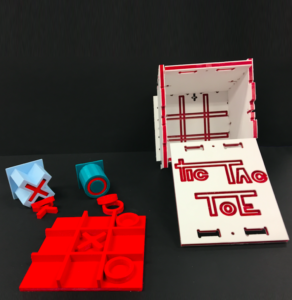
This book came together over the course of a number of years. Some of the original articles were written for the FabLearn Fellows blog, but all are self-contained articles exploring ideas related to practice and springing up through the process of everyday teaching. They bring together larger ideas introduced through maker education and arts education communities.
About the Projects
The projects presented in this book are intended to be both practical and inspirational.Readers can follow the instructions with step-by-step details about specific processes in the areas of software, materials, and machine operation. However, I do not see these projects as strict recipes but as starting points that you and your students will make their own. The work that happens in a makerspace is nonlinear, open ended, and driven by personal interest, and it has been my experience that students want to make personal, unique work. As with the makers whose projects have inspired my spin-offs and new takes, it is my hope that teachers will (1) mix-and-match ideas and materials, (2) substitute different tools and workflows, and (3) take ideas from these pages and apply them to other maker projects in art, design, or engineering.
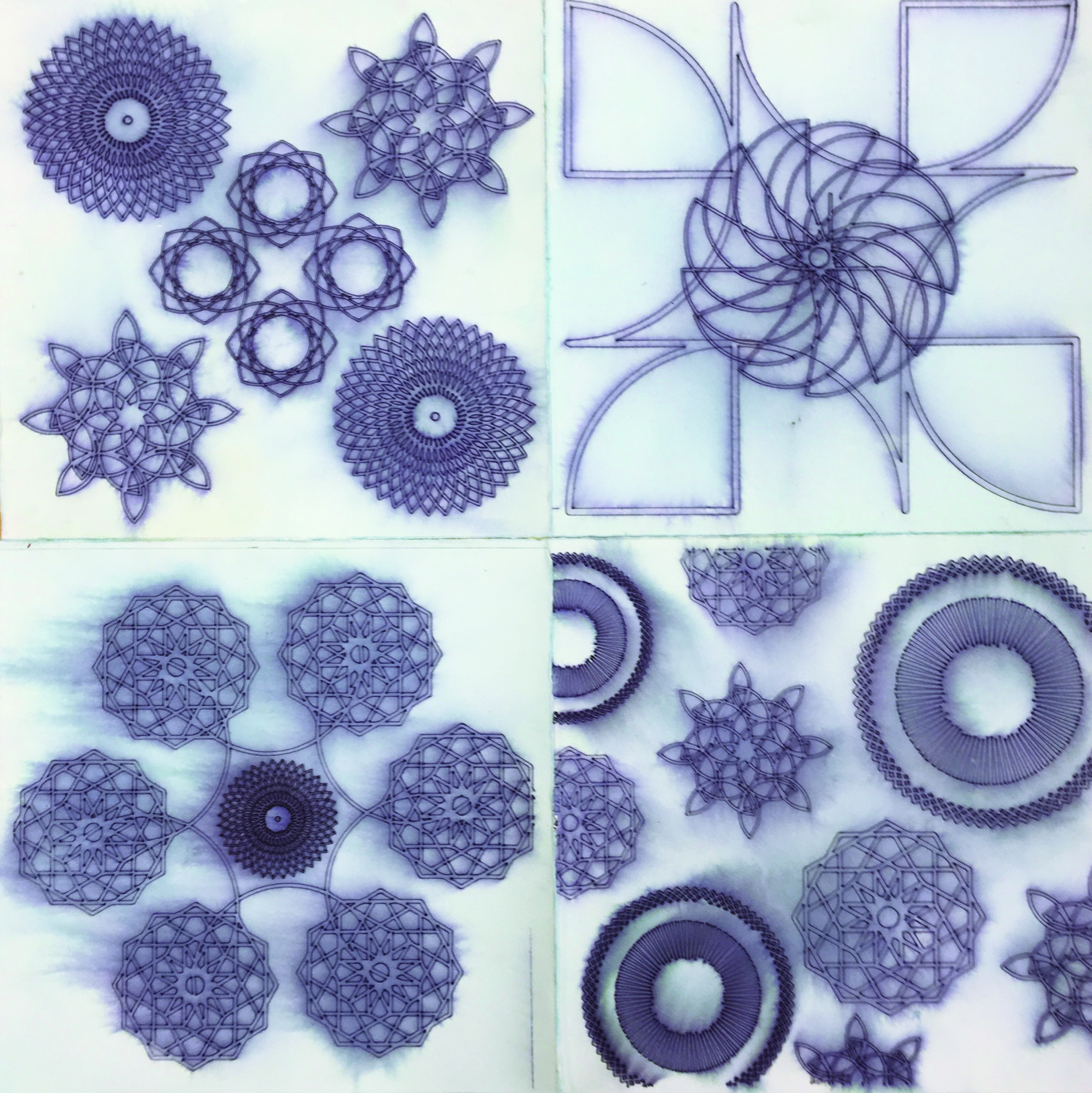
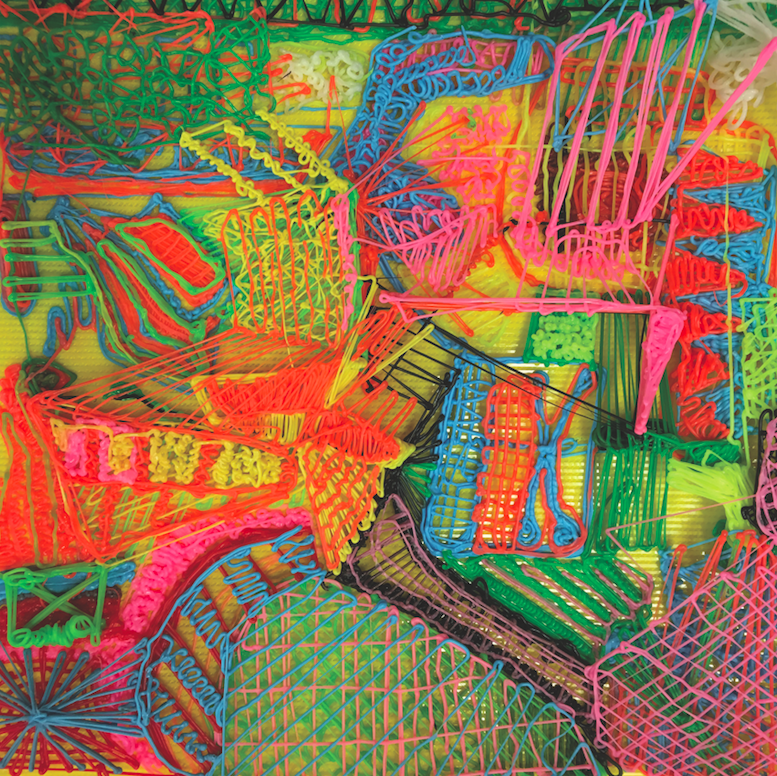
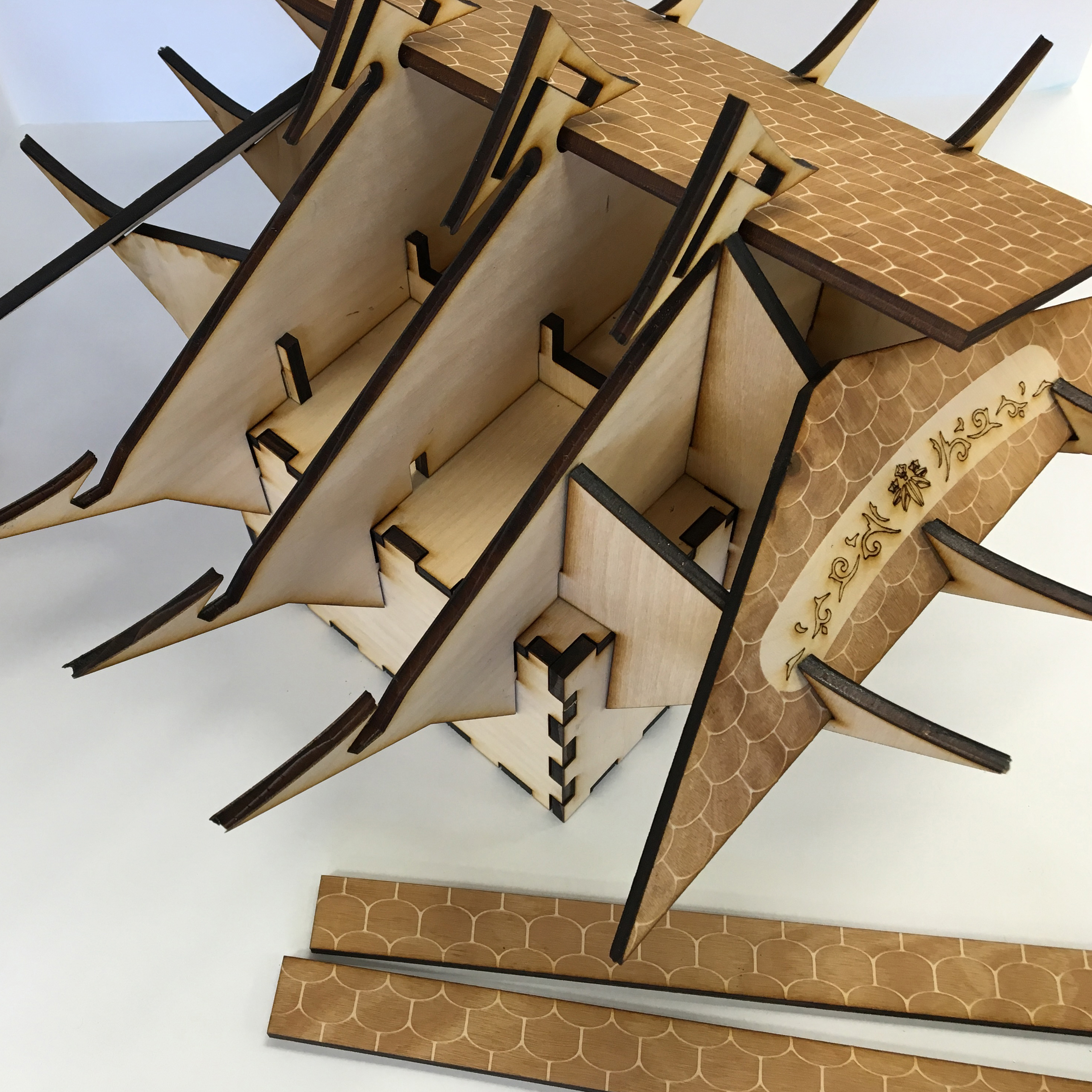
Student work: TurtleArt drawing with a vinyl cutter and pen attachment, 3D pen relief, laser cut sculpture.
The Project Cross-Reference lists projects by digital fabrication tools, supplies, and software. Color coding highlights certain process details in each project chapter.
The Art Material and Process Inventory is intended to spark creativity and encourage the mixing of materials and processes within digital fabrication.
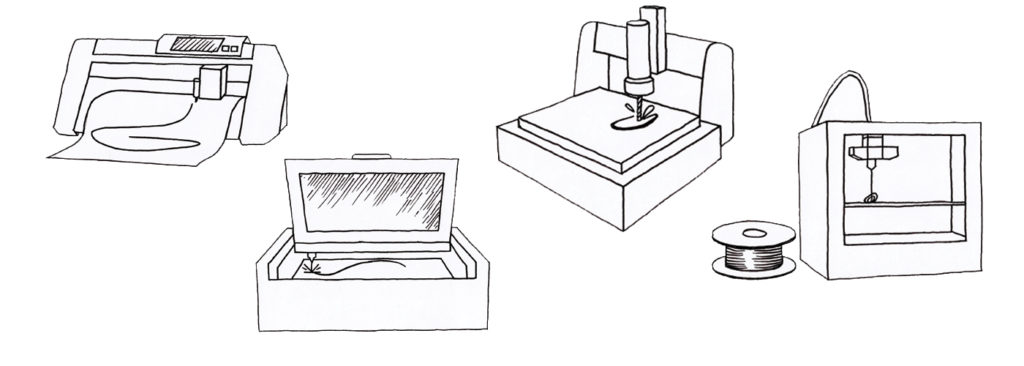
Digital fabrication machines used in this book are commonly found in labs or makerspaces. See pages viii–ix for an overview and notes on each machine.
Design guides for the main design software programs demonstrated in this book are located in the Resources section. These photocopy-friendly guides, with corresponding checklists, can be given to students as they self-guide through each design program. Note: This book goes back and forth between metric and imperial units based on available materials and tools and software preferences.
© Erin E. Riley, 2019. All Rights Reserved.